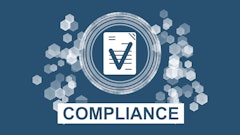
Like many industries, transportation is facing rising costs in areas such as fuel, labor, compliance, and insurance. With a potential recession looming and slow economic growth hindering progress, companies must make critical decisions to succeed. To thrive in this climate, transportation companies must find innovative ways to cut costs and increase efficiency. One solution is to implement systems that save money while improving safety.
An Improved Safety Record
Incorporating safety solutions can provide transportation companies with a clear and substantial advantage: the ability to lower insurance costs. Over the past ten years, insurance premiums have increased by 47%, according to the ATRI. By utilizing advanced technology, companies can significantly reduce the risk of accidents and improve their safety record. This decreased risk directly translates into lower insurance premiums, resulting in significant cost savings.
Moreover, the adoption of safety technology brings the additional benefit of showcasing a commitment to customers. By investing in cutting-edge safety measures, companies demonstrate their dedication to ensuring the well-being of their customers and the public. This commitment not only fosters trust but also has the potential to attract new customers and bolster the overall reputation of the company.
Reducing Moving Violations
By utilizing technologies such as AI dash cams and collision avoidance technology or speed limiters, lane departure warnings, and fatigue monitoring tools, fleets can improve driver behavior, thus reducing the number of accidents and consequently lowering the associated costs. Implementing these features can help fleets avoid moving violations and fines, no matter how insignificant they may seem. For example, a driver caught texting while on the road could cost their company $11,000 in penalties alone
Measures like implementing compliance management software can help companies manage regulations, including accident prevention and environmental rules. By automating compliance management processes, companies can similarly reduce the risk of fines and penalties while improving operational efficiency.
Cutting Fuel Consumption
Excessive speeding, irregular acceleration patterns, and abrupt braking can significantly impede fuel efficiency. The Department of Energy found that these driving behaviors can have the potential to decrease fuel economy by up to 30%.
Telematics devices can provide real-time information on vehicle location and speed. Others like GPS and route optimization software can then help trucking companies to choose the most fuel-efficient routes. By providing feedback and coaching to drivers, trucking companies can encourage safer driving behaviors that relate to reduced associated costs. By evading traffic congestion and road construction, drivers can avoid idling and unnecessary stops, reducing fuel consumption.
Vehicle maintenance monitoring systems also play a crucial role in optimizing truck performance and minimizing costly repairs. These advanced systems offer a proactive approach to maintenance by promptly alerting fleet managers and drivers when any major fixes are required. This approach not only extends the lifespan of the truck but also helps maintain peak efficiency, ensuring optimal fuel consumption, reduced downtime and enhanced overall performance.
Increased Back-Office Efficiencies
Safety systems offer automated data captures for driver logs, vehicle inspections, and fuel receipts. By automatically recording this information, back-office staff can save time and effort previously spent on manual data entry and organization.
Trucking companies can reduce the likelihood of compliance violations and associated penalties by automating processes that meet regulatory requirements such as hours-of-service rules and vehicle inspection mandates. This approach saves back-office staff from investing significant time and effort into addressing such violations. Real-time tracking of vehicle location and driver behavior enables monitoring of driver performance, identification of potential issues, and quick response to customer inquiries or complaints. Additionally, automatic notifications for maintenance reminders, inspections, and compliance issues help companies address costly matters early on.
By enabling real-time tracking of vehicle location and driver behavior, certain systems allow back-office staff to monitor driver performance and quickly identify any potential issues. This helps businesses respond promptly to customer inquiries or complaints. Additionally, these systems provide automatic notifications for important events such as maintenance reminders, vehicle inspections, and driver compliance issues, which can help companies address costly matters early on.
Retaining the Best Drivers
Safety technology improves driver behavior, reducing the risk of accidents and damage to vehicles and precious cargo on the road. Retaining seasoned drivers enables trucking companies to dodge the expenses tied to recruiting, hiring, and training new drivers. The average estimated cost to replace a single driver would cost a transportation company upwards of $8,000 every time they want to make a new hire. These expenses can be substantial, especially given the industry's high turnover rates.
Experienced drivers who are familiar with the company's operations, customers, and routes tend to be more productive compared to new drivers. By retaining the best of the best, trucking companies can maintain productivity and avoid the costs associated with reduced efficiency.
By adopting fleet management solutions that mitigate on-road risks, transportation companies can reduce insurance costs, streamline processes, attract new customers and enhance their reputation. Ultimately, the implementation of cost-saving systems can help transportation companies thrive in the current economic climate and beyond.


























